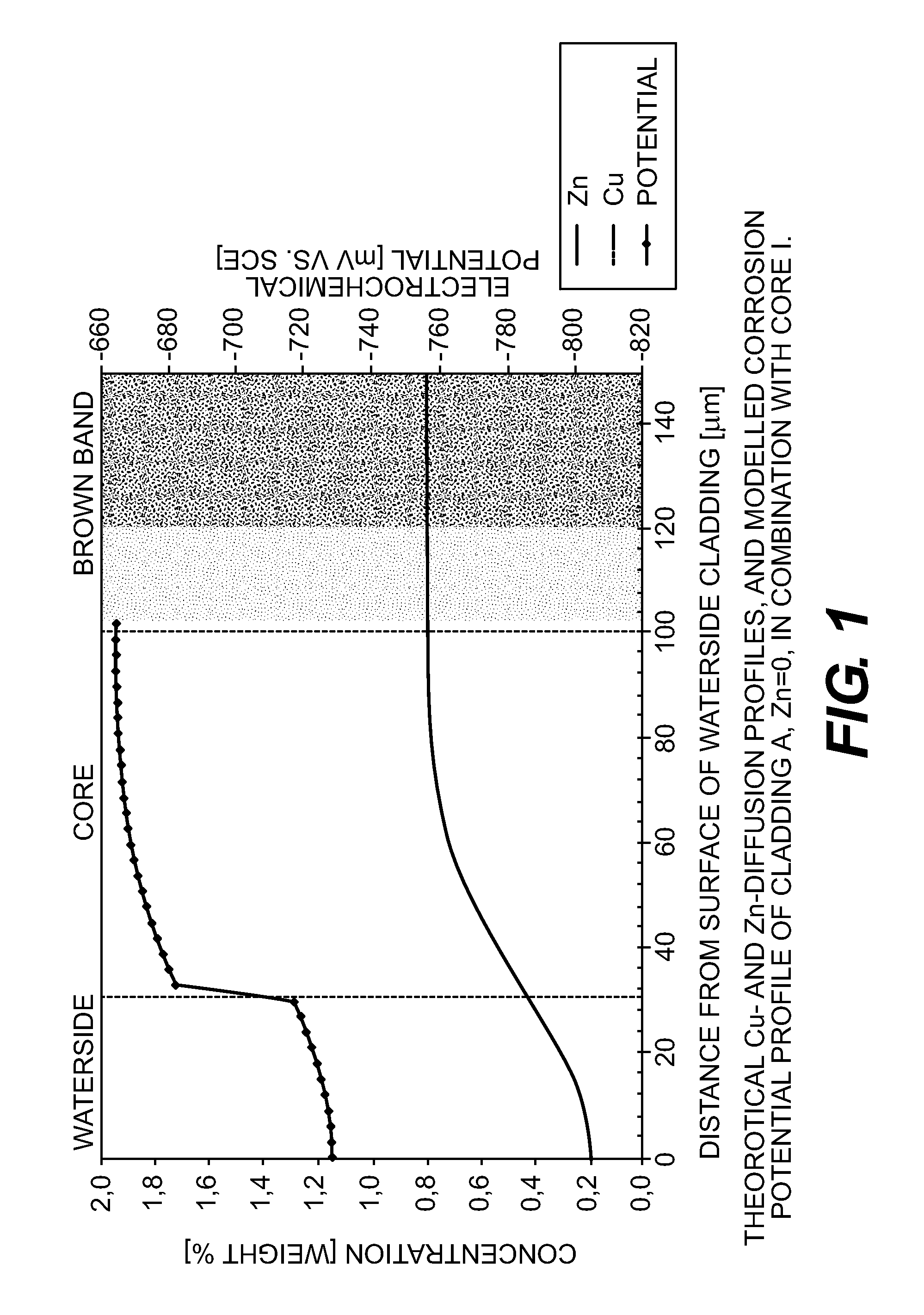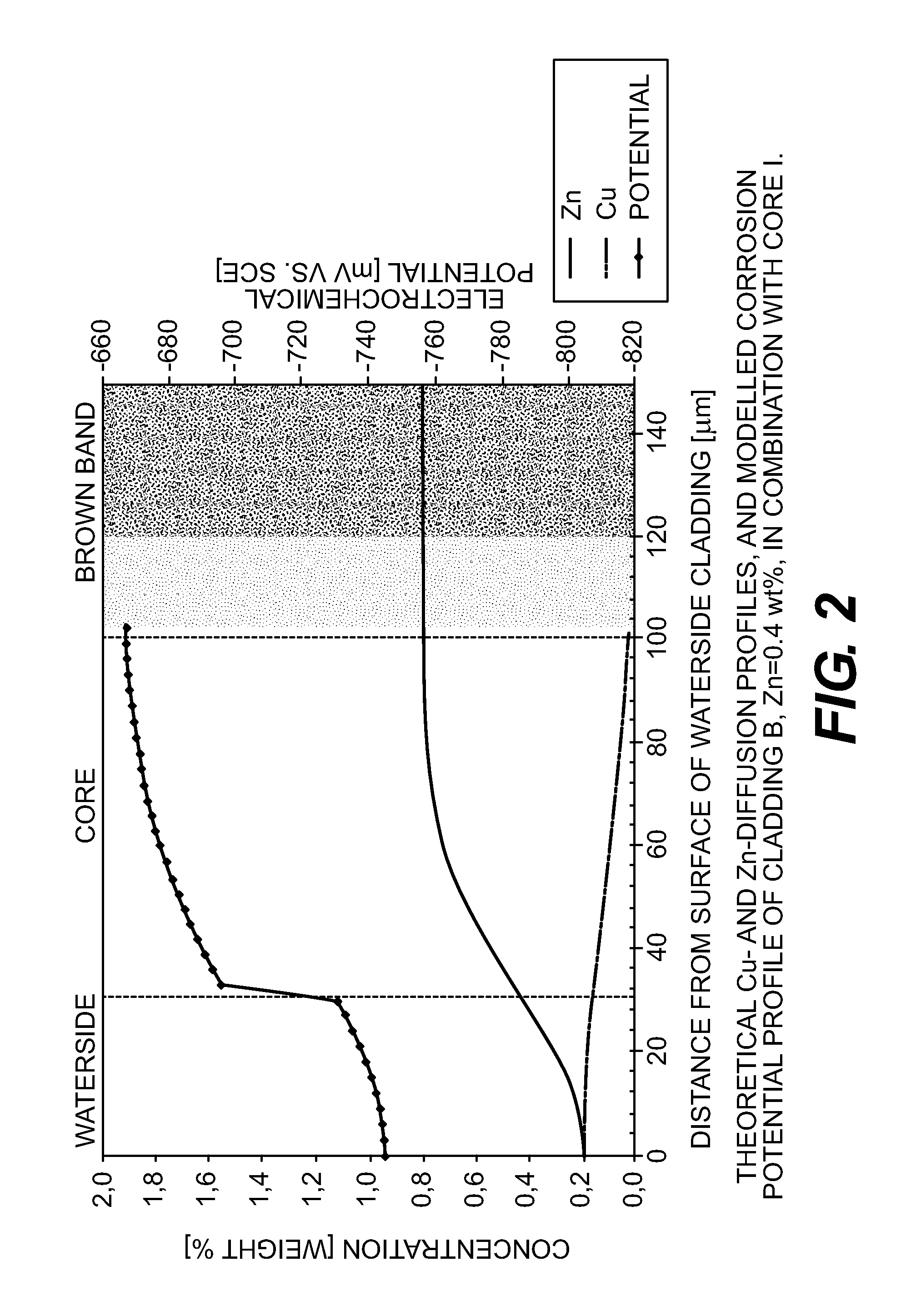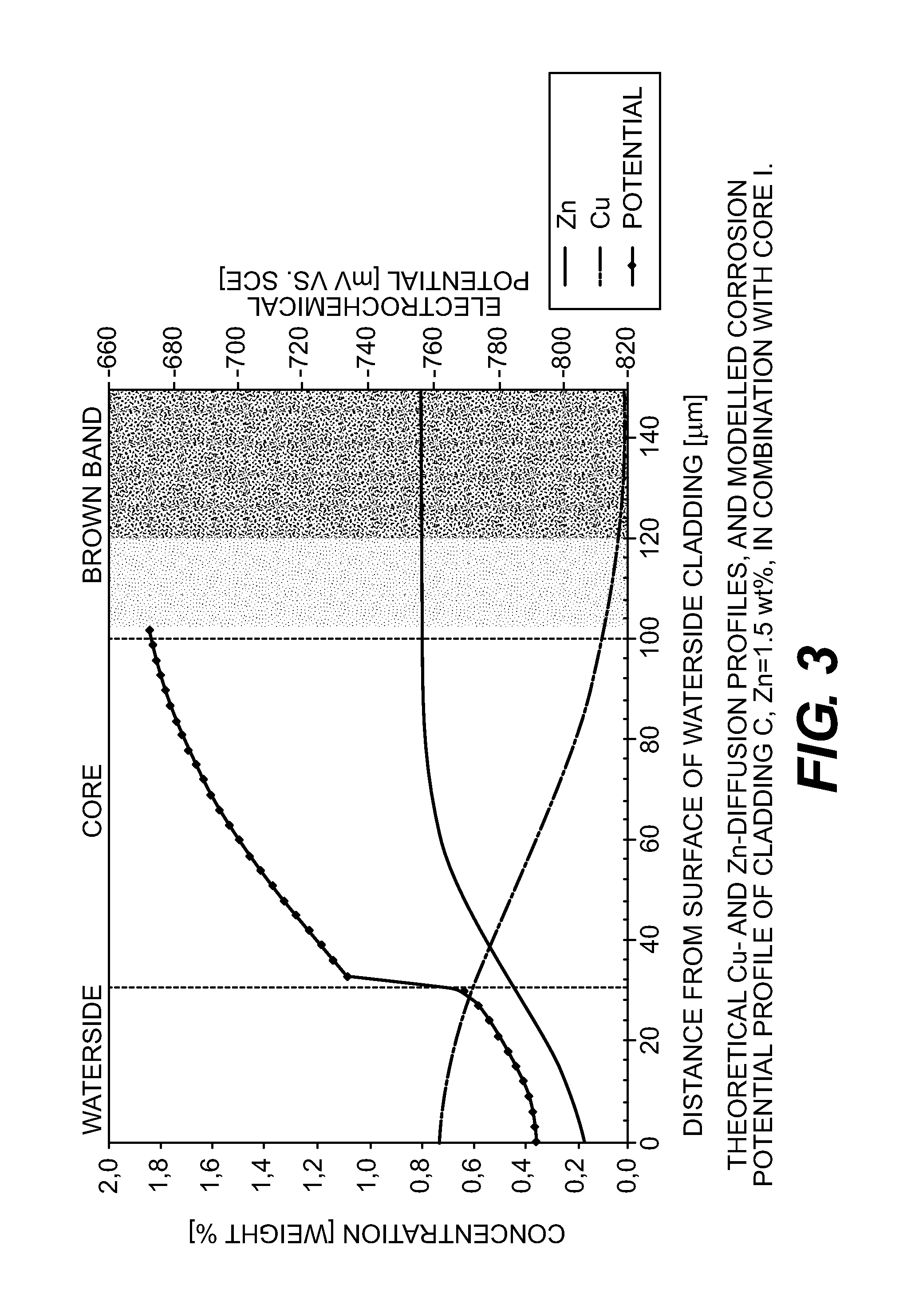Aluminium alloys brazing sheet for thin tubes
- Summary
- Abstract
- Description
- Claims
- Application Information
AI Technical Summary
Benefits of technology
Problems solved by technology
Method used
Image
Examples
example 1
[0037]The concentration profiles were calculated by using an erf-solution to Fick's second law of diffusion (Formula 1). The terms and definitions are given in Table 1. The activation energy Q and maximum diffusion constant D0 for these alloy systems were verified against experimental data (EPMA, Electron Probe Micro Analysis). For Cu, Q of 130 kJ / mol in combination with D0=6.5·10−5 m2 / s. was used For Zn, Q of 114 kJ / mol in combination with D0=2.59·10−5 m2 / s. was used.
[0038]The concentration “C”, at a distance “y” from the waterside cladding surface after brazing, was calculated using the formula:
C=Ccore+0.5*ΔC(Erf(A)−Erf(B)) (1)
A=(y+h) / √(4Dt) (2)
B=(y−h) / √(4Dt) (3)
D=D0e−Q / RT (4)
TABLE 1Terms and definitions for diffusion calculation.TermSortDefinitionCcorewt %initial concentration in coreCwatersidewt %initial concentration in waterside claddingΔCwt %Cwaterside-Ccoreyμmdistance from waterside cladding surfacehμmthickness of waterside claddingDm2 / sdiffusion constant (temperature de...
example 2
[0046]Another aspect of the present invention is the internal corrosion protection. The potential difference between the surface of the waterside cladding and the core of Brazing Sheet Example 1 is 63 mV. In Brazing Sheet Example 4 (Table 6), where a thinner waterside cladding is used the potential difference after brazing is 54 mV. The internal corrosion performance of this material was tested.
[0047]Material sheet specimens E and D were made by using a core with a composition given in Table 7. Hot-rolled material of said core material was used which was originally clad with 10% AA4343 braze cladding and 10% waterside cladding. The waterside cladding was removed and replaced with waterside claddings, according to the compositions in Table 8.
TABLE 7The chemical composition of the core, in wt-%, measured by OES.SiFeCuMnMgZnZrTiCore0.050.20.81.70.130.03
TABLE 8The chemical composition of the watersidealloys, in wt-%, measured by OES.WatersideSiFeCuMnMgZnZrTiD0.80.21.7E0.80.21.62.7F0.90....
example 3
[0054]Another aspect of the present invention is the particle distribution. Material with a core composition according to Table 7 and waterside cladding F from Table 8, was used for analysis. The waterside cladding ingot was preheated at a temperature <550° C. and the slab was hot-rolled with a total reduction of 90%. The waterside slab was welded onto the core ingot; on the opposite side a AA4343 braze cladding slab was welded. The package was pre-heated at a temperature <550° C. and hot-rolled with a total reduction of 99% to 3.9 mm. The slab was further reduced to final gauge 0.270 mm by cold-rolling. The coil was temper annealed to temper H24.
[0055]Material from the coil described above was braze simulated in a CAB batch furnace. Two thermal cycles were used: one which included raising the temperature from room temperature to 610° C. in 20 min, followed by a dwell time of 3 minutes at the maximum temperature. A second thermal cycle was used similar to the previous, but with a ma...
PUM
| Property | Measurement | Unit |
|---|---|---|
| Temperature | aaaaa | aaaaa |
| Length | aaaaa | aaaaa |
| Fraction | aaaaa | aaaaa |
Abstract
Description
Claims
Application Information
 Login to View More
Login to View More - R&D
- Intellectual Property
- Life Sciences
- Materials
- Tech Scout
- Unparalleled Data Quality
- Higher Quality Content
- 60% Fewer Hallucinations
Browse by: Latest US Patents, China's latest patents, Technical Efficacy Thesaurus, Application Domain, Technology Topic, Popular Technical Reports.
© 2025 PatSnap. All rights reserved.Legal|Privacy policy|Modern Slavery Act Transparency Statement|Sitemap|About US| Contact US: help@patsnap.com



